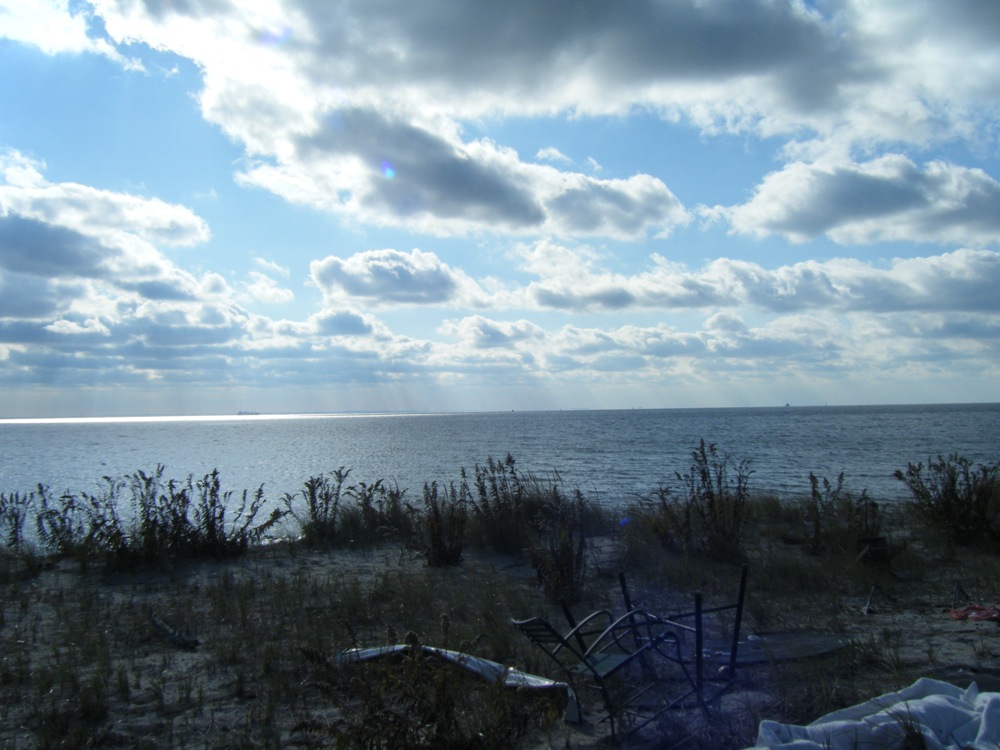The sea continues to rise a few centimeters per year. Long Island Sound off Bridgeport, Connecticut.

When I look back on my first years covering the environment in the 1990s, it looks like a lost era of innocence.
When I began covering the environment beat for a daily newspaper, my focus was government enforcement and efforts to reverse damage. The Clean Air Act of the first Bush presidency (a successful program based on the principles of cap and trade). Rare animals and land policies that might help them recover. It was all about undoing harm: volunteers would move migrating frogs and salamanders across dangerous roads on rainy nights. Or regulations would halt overfishing. Or more land would help struggling animals.
Each story was in its own compartment. Then climate change science matured.
I have been listening to scientists describe their research for a dozen years and, since the first time, I have worked to explain this to the public.
I used to think that climate change, as important as it is, would make the environment beat too narrow. I thought it would trump stories about chemical spills, air pollution, overfishing, waste dumping, and endangered species. Actually, climate change has broadened the beat, emphasizing the interconnectedness of climate, the ocean, and the land. In essence, the beat is bigger. These issues affect every aspect of life, from industry and business to food, clothing, and our living rooms.
Despite the doubt some groups try to cast on climate change, this is not a debatable topic. The climate is changing, and humans have accelerated that change. Americans struggle to think in global averages and to view trends over decades, not one or two seasons. As sure as the sky is blue on a sunny day, the climate is changing. Science is established that because civilization emits huge amounts of greenhouse gases by burning fuel, the average temperature (averaged over all four seasons) on the Earth (averaged for all of the continents) is rising at an accelerated rate compared to what it would do without all of this burning. The changing climate has become the environmental story of this century. It affects almost every other environmental story: changing climate affects wildlife, water, storm systems, and the infrastructure of civilization.
Besides these, climate change has brought new stories to the beat. As resources like oil and tropical forests deplete, the story a journalist must tell involves both the depletion, but the wider implications. People drill for oil and cut down tropical forests to make their ways in the world—run their cars and houses, raise animals on the former forests—and in doing so, they do damage. But the bigger story is this: civilization rushes toward these resources. It’s a frantic search, and one we know must change because carbon dioxide, methane, and other greenhouse gas emissions that come largely from burning fossil fuels will further add to the CO2 in the atmosphere, adding to the average temperature warming, and adding to the effects of climate change.
I sometimes miss those innocent years of the 1990s, when I was counting turtle names on endangered species lists and checking in with marine mammal rescuers. I believed when I started that human action could undo human damage. Turtles and marine mammals continue to struggle, but no story about them today suggests naively that they live in a vacuum and that humans can help them a little and they will rebound and that will be that. No, every struggle in nature today, and every human exploitation of nature, is a big tale, one connected to all of the continents and the changing climate.
My stories have always focused on the American way of life and what it does to the environment. I know now that people don’t stop wasting and damaging the planet that feeds them just because they learn better. The problems feel as if they’ve expanded, in a way, but they interconnect.
